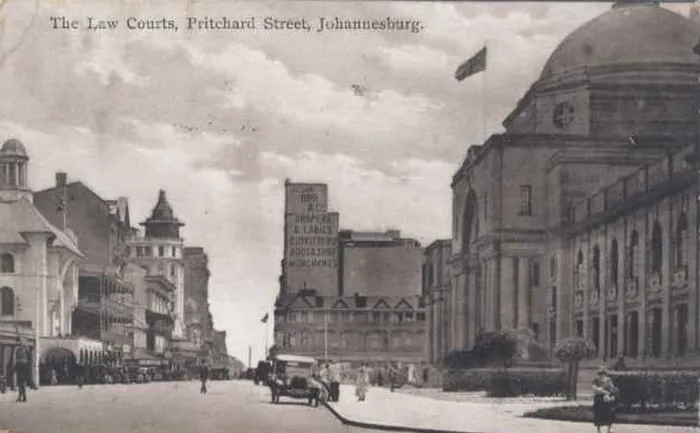Pretoria killings have similarities with Joburg’s first serial killer

In 1937, Joburg had a serial killer prowling its streets, targeting sex workers. Picture: Supplied In 1937, Joburg had a serial killer prowling its streets, targeting sex workers. Picture: Supplied
Johannesburg - In Pretoria, police are hunting a killer who is targeting the homeless, but 82 years ago in Joburg, another kind of predator had detectives forming an unlikely alliance.
Mavis Davids struck a deal with the stranger in the big black car. She opened the passenger door, got in, and disappeared into the night.
It was 1937 and in Europe Adolf Hitler’s land grab continued, South Africa was still struggling through an economic depression and Joburg had a killer stalking its streets.
The killings had even brought an unlikely truce to the city.
No longer were police harassing the sex workers who stood on the street corners; they now protected them.
Each sex worker had at least two detectives watching over her as she went about soliciting clients.
When the client drove off with a sex worker, a detective would scribble the licence plate in his incident book.
The city’s super-sleuth of the day, CID head Lieutenant Ulf Boberg, had come up with the idea.
He had four bodies on his hands, and he was no closer to finding the killer. All the dead sex workers were found dumped alongside Potchefstroom Road, which today runs through Soweto.
Each body had provided few clues. Post-mortems revealed strangulation as the cause of death, and in every incident the victim’s handbag was missing from the crime scene.
Boberg must have realised that he and his men were on the trail of a special kind of murderer - something different from the usual Saturday night murders that spilled out of the mining town’s ramshackle shebeens.
This would require an unorthodox approach, so Boberg approached the higher authorities and got permission to allow his detectives to watch over Joburg’s streetwalkers.
The plan was that the women would get their clients to drop them off at the place from where they had picked them up. For months, the detectives watched Johns come and go.
Then Mavis Davids went missing.
News spread quickly and police raced to Potchefstroom Road, to the killer’s known haunt.
There they found Mavis, bleeding, but alive. She told them she had become uneasy when her client turned into Potchefstroom Road. When he stopped the car, she tried to open the door and escape. But the man grabbed her, placed his hands around her neck and began squeezing. She passed out and remembered nothing more.
This time, the cops had a breakthrough - a detective had scribbled down the car’s licence plate.
A detective pulled the records and they had an address. When they arrived at the house that same night, they noticed the black car was not there. So they waited.
In the early morning, the car drew up. The man armed detectives pulled from the car that morning was
Cornelius Burger.
When they searched his house, they found his trophies hidden in a cupboard - the handbags of the
murdered women.
Marvis’s handbag still lay in his car.
Burger, a later examination revealed, suffered from a venereal
disease, probably syphilis. It had effected his mind, so much so that he never stood trial.
He did, however, tell police that he had caught the disease from a sex worker and that this had triggered his homicidal rage.
Burger would die in a mental
asylum. In his later years Boberg would describe his experience of hunting what was probably Joburg’s first serial killer in his book, Boberg Vertel.
Today, Burger is a footnote in forensic psychology journals which modern profilers now use to track the city’s latest generation of killers. Perhaps all these years later, he will provide some insight into the workings of whoever is targeting the homeless in Pretoria.
Saturday Star
Vigil held to pay homage to the five homeless men who were killed
Homeless kicked out of unused Tshwane building despite recent killings
I sleep with one eye open, says homeless Pretoria man after spate of killings
Homeless fear for lives as police proble ‘valuable info’
Pretoria's homeless live in fear and doubt cops will catch killer
Family track down heartbroken father after 20 years of searching
Homeless killings have put spotlight on those living on streets
Killer of homeless may think he is removing ‘bad apples’
‘There is someone out there to get us’
Employees win CCMA case against luxury guesthouse but face uncertain future
More weather related deaths expected as temperatures continue to drop
Cops bungle Muckleneuk homeless murder case